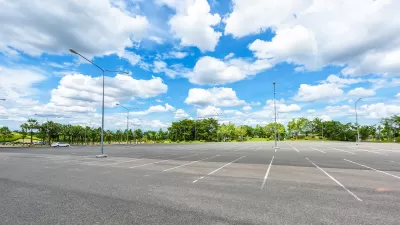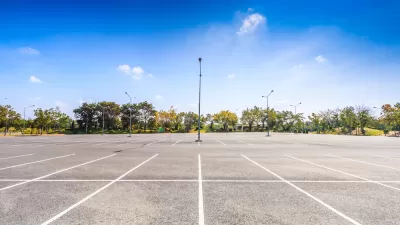A new study found that half of the city’s commercial parking spaces are usually empty.

A study showing that Boulder, Colorado has almost twice as many parking spots as are needed at any given time is prompting city officials to consider eliminating minimum parking requirements, writes John Herrick for Boulder Reporting Lab.
“At retail locations, nearly half of the parking spots go unused during peak times on average. Similarly, more than half of the spaces at office locations remain empty on average.” That number falls in residential areas to 30 percent, Herrick notes, while 35 percent of trips in the city are made in single-occupancy vehicles.
This overabundance of parking is driving up housing costs, increasing the city’s temperature and making streets more dangerous for cyclists and pedestrians by encouraging more cars on the road, according to transportation reform advocates.
Boulder planners say getting rid of parking minimums across the city would reduce the cost of housing and allow developers to build parking as needed. City officials are also considering a “transportation demand management” ordinance that would require developers to include more infrastructure for non-auto modes in their projects and offer perks to residents such as transit passes and secure bike parking areas.
FULL STORY: Boulder planners explore elimination of parking minimums across entire city starting next year

Study: Maui’s Plan to Convert Vacation Rentals to Long-Term Housing Could Cause Nearly $1 Billion Economic Loss
The plan would reduce visitor accommodation by 25,% resulting in 1,900 jobs lost.

North Texas Transit Leaders Tout Benefits of TOD for Growing Region
At a summit focused on transit-oriented development, policymakers discussed how North Texas’ expanded light rail system can serve as a tool for economic growth.

Why Should We Subsidize Public Transportation?
Many public transit agencies face financial stress due to rising costs, declining fare revenue, and declining subsidies. Transit advocates must provide a strong business case for increasing public transit funding.

How to Make US Trains Faster
Changes to boarding platforms and a switch to electric trains could improve U.S. passenger rail service without the added cost of high-speed rail.

Columbia’s Revitalized ‘Loop’ Is a Hub for Local Entrepreneurs
A focus on small businesses is helping a commercial corridor in Columbia, Missouri thrive.

Invasive Insect Threatens Minnesota’s Ash Forests
The Emerald Ash Borer is a rapidly spreading invasive pest threatening Minnesota’s ash trees, and homeowners are encouraged to plant diverse replacement species, avoid moving ash firewood, and monitor for signs of infestation.
Urban Design for Planners 1: Software Tools
This six-course series explores essential urban design concepts using open source software and equips planners with the tools they need to participate fully in the urban design process.
Planning for Universal Design
Learn the tools for implementing Universal Design in planning regulations.
Ascent Environmental
Borough of Carlisle
Institute for Housing and Urban Development Studies (IHS)
City of Grandview
Harvard GSD Executive Education
Toledo-Lucas County Plan Commissions
Salt Lake City
NYU Wagner Graduate School of Public Service





























